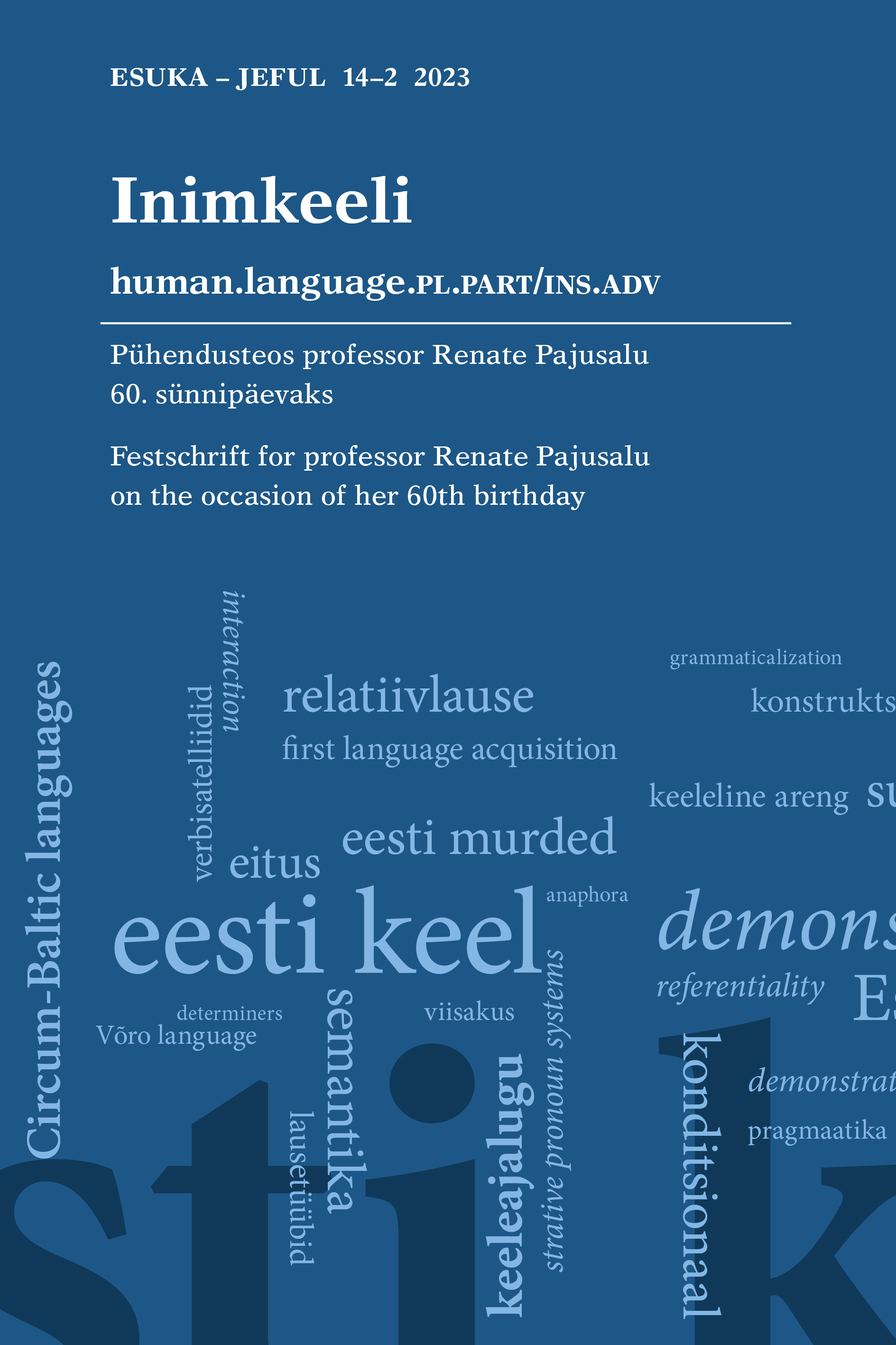Functions of demonstrative pronouns in contemporary Soikkola Ingrian
DOI:
https://doi.org/10.12697/jeful.2023.14.2.03Keywords:
Ingrian, pronouns, demonstrative pronouns, deixis, anaphora, discourse markers, language contact, isuri keel, asesõnad, demonstratiivpronoomenid, deiksis, anafoorid, diskursusemarkerid, keelekontaktAbstract
This article discusses demonstrative pronouns in the Soikkola dialect of the Ingrian language. The material for the research comes from the collection of spontaneous speech samples recorded in the 21st century. All the examples are published for the first time. The article presents mainly a qualitative analysis and aims at overviewing the basic functions of the Ingrian demonstrative pronouns tämä and še. It is shown that in the contemporary Ingrian the demonstratives are used as deictic and anaphoric devices, and also as discourse markers. Individual speakers demonstrate differences in the use of these pronouns due to the contact influence from the neighbouring languages.
Kokkuvõte. Elena Markus, Fedor Rozhanskiy: Demonstratiivpronoomenite funktsioonid tänapäeva isuri keele Soikkola murdes. Käesolevas artiklis käsitletakse demonstratiivpronoomeneid isuri keele Soikkola murdes. Uurimuse materjal pärineb 21. sajandil salvestatud spontaanse kõne näidiste kogust. Kõik näited avaldatakse esimest korda. Artiklis esitatakse peamiselt kvalitatiivne analüüs ja selle eesmärk on anda ülevaade isuri demonstratiivpronoomenite tämä ja še põhifunktsioonidest. Näidatakse, et tänapäeva isuri keeles kasutatakse demonstratiive deiktiliste ja anafoorsete vahenditena ning ka diskursuse markeritena. Üksikutel kõnelejatel esineb nende asesõnade kasutamisel erinevusi naaberkeelte kontaktmõju tõttu.
Downloads
Downloads
Published
How to Cite
License
Copyright (c) 2023 Elena Markus, Fedor Rozhanskiy

This work is licensed under a Creative Commons Attribution 4.0 International License.


